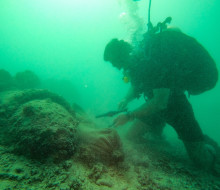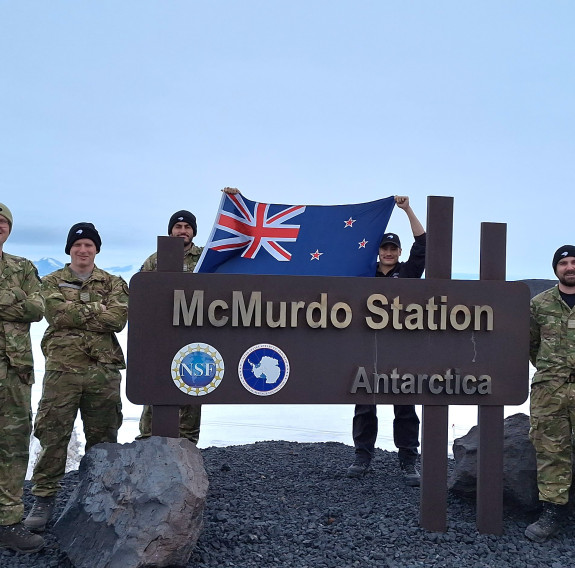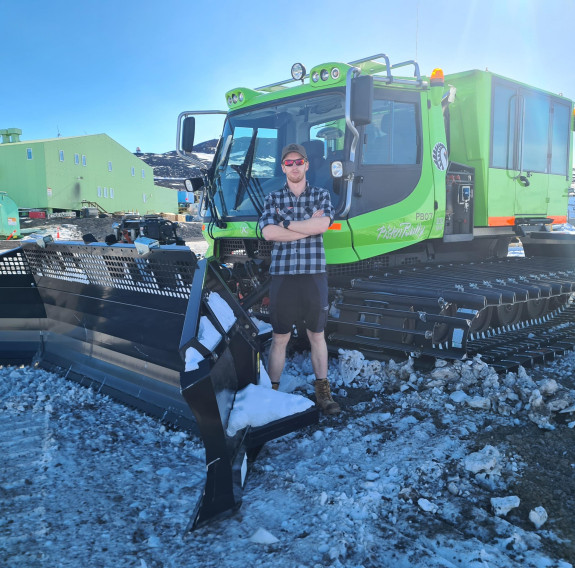
Second World War-era bombs in Vanuatu made safe by Navy divers
26 June 2024
Unfortunately you are viewing this website on an outdated browser which does not support the necessary features for us to provide an adequate experience. Please switch to a modern browser such as latest version of Google Chrome, Mozilla Firefox, Apple Safari or Microsoft Edge.
Ngā mihi nui
Crew on a Royal New Zealand Air Force (RNZAF) C-130H (NZ) Hercules have conducted a successful medical evacuation (medevac) from Antarctica, a challenging mission given a rapidly closing window of daylight.
The flight has also seen the return of the final 12 New Zealand Defence Force (NZDF) personnel deployed to the ice, completing a busy summer season for those on the NZDF’s Operation Antarctica.
The crew on board the RNZAF Hercules successfully completed the medevac of an American patient from the US National Science Foundation’s McMurdo Station, after receiving a request over the weekend.
There was an NZDF doctor and medic on board the aircraft when it flew to Antarctica’s Phoenix Airfield on Monday morning, and on arrival into Christchurch that night the patient was taken by ambulance staff to hospital.
The return to New Zealand of personnel on the flight marked the end of a season on the ice supporting science and research programmes that are back in strength to pre-pandemic levels.
NZDF personnel deploy to Antarctica in support of Antarctica New Zealand and as part of the organisation’s contribution to the Joint Logistics Pool (JLP) with the United States Antarctic Programme.
Over the 2023/24 summer season, the RNZAF provided 10 C-130 Hercules and five Boeing 757 flights as part of the JLP.
The NZDF’s contribution also included personnel at Christchurch’s Harewood Terminal, who oversee cargo and passenger movements for all aircraft supporting Antarctica programmes.
This season, the Harewood team supported 141 south and northbound flights with a total of 4,197 passengers and 860,000kg of cargo, including fresh food and equipment.
Major Lucy Wright, the Senior National Officer for the NZDF’s Operation Antarctica, said around 200 personnel were involved over the summer.
This included air crew on the RNZAF’s ice flights and personnel surging in and out depending on their role, she said.
A C-130H (NZ) Hercules flew to Antarctica on Monday for a medical evacuation of a patient from NSF McMurdo Station to Christchurch, and to transport passengers back from Antarctica

NZDF personnel support operations at New Zealand’s Scott Base and also the United States’ NSF McMurdo Station

Driving a PistenBully (snow groomer) is among the highlights of an Op Antarctica deployment for NZDF personnel like Lance Corporal Kieran Cropp
About 70 NZDF personnel were in Antarctica at the peak, when personnel were deployed to offload and move cargo from ships re-supplying bases in Antarctica.
Their roles varied from drivers, ship offload teams and cargo handlers, to chefs and communications operators who stay in touch with researchers in the field.
“It has been a busy season, as the science and research programmes in Antarctica are back to pre-Covid levels,” Major Wright said.
“At one point we had teams of researchers and scientists spread over a distance similar to that from Cape Reinga to Bluff. Our communications operators were their link to the outside world.”
Ship offload teams may be involved in round-the-clock operations when vessels are in port. Depending on their location, a driver might find themselves behind the wheel of a Hägglunds - a tracked vehicle used in Antarctica - while the highlight for a plant operator could be operating a PistenBully snow groomer used on the ice.
The NZDF regularly deploys a Light Engineering Team involving carpenters, electricians, plumbers, combat engineers and maintenance fitters who maintain and repair facilities.
This season, their work included fitting windows, installing pipes, painting, welding, and installing base plates and stanchions on a section of the fuel line by Scott Base.
Of all those deployed, those serving as members of the Scott Base Support Team spend the most time on the ice, with stints of around six months.
A deployment to Antarctica includes different experiences from learning to survive in temperatures as low as -40 degrees Celsius to exploring the environment.
“And most importantly, supporting world-leading research and science that impacts us all,” Major Wright said.
As one season closes, planning has already begun for next season’s Operation Antarctica.